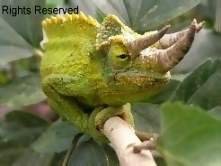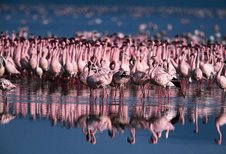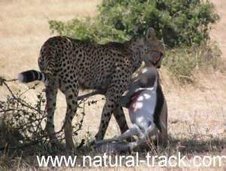The savannahs of Kenya are home a wide range of wildlife. One of the most frequently seen wildlife is the spotted hyena, yet little is known about them.
In the traditional African society, the Hyena has been branded 'the coward one'.
This has been due to the way of feeding of the hyena. Known as a scavenger, the hyena is actually a great hunter and scavenging only makes 5%- 10% of their meals.
They rarely leave any evidence especially because they devour everything. For example they can make a kill in the night and the only sign will be light blood stains.
In the recent years the complexity of the hyenas has been revealed. Lots of time has been dedicated to studying them. This article is about hyenas and their survival tactics in the savannahs of Kenya. They range throughout sub-Saharan Africa in savannah, arid areas, and open woodlands. So far they aren't present at the coast.
There exist three species of hyenas in Africa. Two species are found in Kenya.
The most common being the spotted hyena, crocuta crocuta.
They live in groups called clans and the clan is under the leadership of the oldest female, the alpha female. Interestingly, the females are dominant over the males and are heavier than them. The females genitalia are very masculinized which contributes to their being aggressive. Such sex dimorphism is not common with other wildlife. This is due to the presence of higher level of testosterone in the female's body than that of the males.
A distinguishing feature with the hyenas is the 'haunch-back' and short hind legs. They hold their head low when they walk. Usually the head has a rounded skull and long ears. They have extremely strong jaws and a complex acidic digestion system. This is one of the factors that give them a step ahead for survival. They are capable of ingesting bones, horns, hooves and the tough animal skins.
Only the hair is not digested and this usually comes out in the form of bolus or locally referred to 'hyena hair ball'. All this bone matter that they eat is what makes the hyena feces chalk-white.
They hunt in packs in a way that could be termed as ruthless as they do not have a killing bite. They lack in hunting technique and most cases they run down their victim to exhaustion. Usually they attack their prey and tear chunks before their victim dies.
It is interesting to know that lions steal lots of their kills. It is true that hyenas do the final cleaning by chewing the bones and the skins left by others. In some cases the hyenas have succeeded to steal from the lions but in most of occurrences the reverse is more common.
The reproduction and life cycle is not seasonal. The females do not however mate with their members of the clan. They can take any other wandering male for mating and discard him. Four months is the gestation period and usually give birth to up to four cubs. These are usually black in color with some others having small taint of black. A weird thing that happens with the cubs is competition over who nurses first.
This in most cases result in fighting for dominance. The looser usually starves to death and this is only with the female cubs. Hyenas, unlike other wildlife take very long to wean their cubs. It may take between 14-18 months. The female can lactate up to 12 months with milk that is very high in protein percentage.( 14%). The cubs start following the mother to the point of kill when they reach 1 year.
They do not bring back food to the den. They eat to their fill on the spot.
The female cubs stay in the clan of their birth but males are kicked out when they reach around 2 years. Apart from playing with the cubs the male has no role in upbringing of the cubs.
One clan can have between 20-100 members, all on the matriarchal system. All the members are related. Each clan digs its own den which comprises of deep and long tunnels to accommodate the clan. They mark their territory through anal sac secretions. This is a paste that they use to define their boundary and is deposited at the edge of their territory. That is their home-territory that they protect and intruders are not welcome. They have a greeting system of sniffing each others genitalia and also as a way of identification or recognition within members of the same clan.
To the untrained eye, it is difficult to differentiate between males and females. This is because of the physical resemblance of the female's genitalia to that of the male. But in any case they are female organs. The females are not hermaphrodite as some have claimed at first sight.
Hyenas have 'toilets' whereby all the members go to deposit their dung. This adds to the boundary markings of their territory.
They communicate in a number of ways: When about to attack the tail is held high, when it is held forward over the back, it is a sign of excitement. And when frightened they hold the tail tucked between the legs. When there is presence of food, this is the time you hear the famous 'hyena laughter' especially in the night. This laughter is a call to other clan members and can be heard up to 3 kilometers away.
It is important to note that though hyenas portray cowardly behavior, they can be extremely dangerous. They should be left alone, least intimidated and their respect awarded to them.
PKP-Kenya Safari desk
Natural Track Safaris









1 comment:
It is awesome to view an in-depth blog on such a service you provide. I am really impressed. I have written an eBook on the Nairobi Guide. May be you could let me know if you need to have some put in my eBook.
Post a Comment